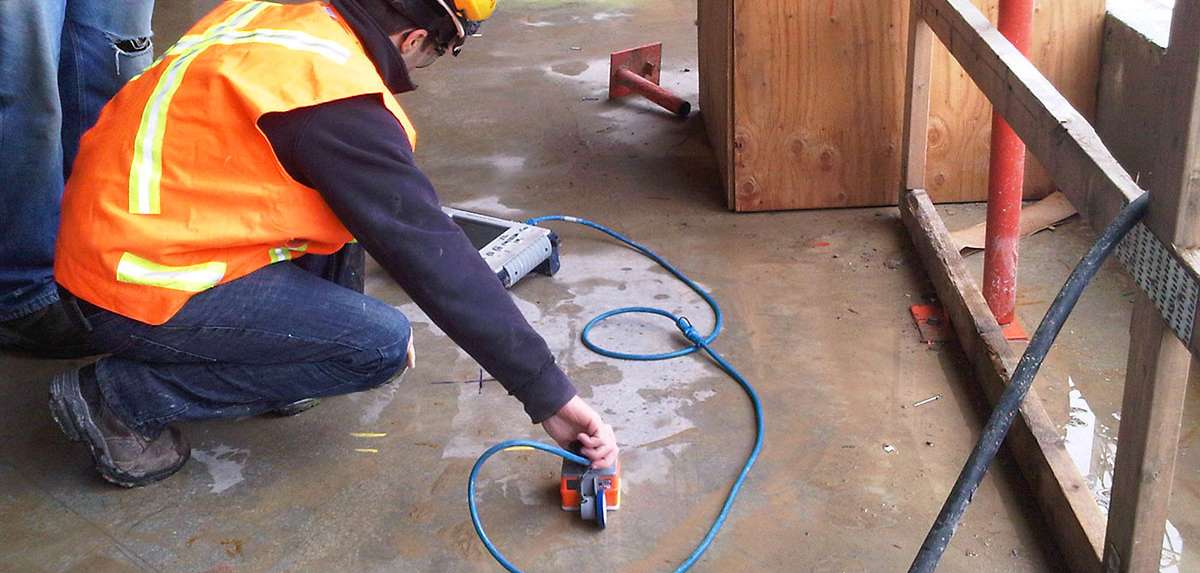Checking Out the Depths: A Comprehensive Overview to Concrete Scanning and Its Diverse Applications
In the realm of building and framework growth, the thorough procedure of concrete scanning holds a pivotal function in guaranteeing the structural integrity and safety of jobs. As technology remains to develop, the applications of concrete scanning have actually expanded much past mere surface-level evaluations. From finding rebar and post-tension cable televisions to drawing up conduits and gaps hidden within concrete structures, the capabilities of contemporary scanning techniques are both impressive and essential. The true depth of concrete scanning's potential reaches also additionally, branching right into unexpected sectors and sparking ingenious remedies. The interconnected internet of possibilities that concrete scanning presents is not only interesting yet additionally essential for the improvement of different sectors.
Relevance of Concrete Scanning
Understanding the importance of concrete scanning is critical in making sure the security and stability of frameworks throughout construction and remodelling jobs. Concrete scanning makes use of sophisticated modern technologies such as ground-penetrating radar (GPR) and electro-magnetic induction to spot ingrained items, spaces, or various other abnormalities within concrete frameworks.
In addition, concrete scanning plays an essential role in guaranteeing conformity with building codes and policies that mandate the protection of existing structural elements throughout building and construction activities. By precisely mapping out the inner composition of concrete, scanning technologies allow construction specialists to make enlightened choices that support the architectural security and longevity of structures and infrastructure tasks. In essence, the relevance of concrete scanning hinges on its capacity to secure both the architectural integrity and the personnel included in building ventures.
Technologies Used in Concrete Scanning
Concrete scanning relies on innovative innovations such as ground-penetrating radar (GPR) and electromagnetic induction to precisely detect ingrained things and anomalies within concrete frameworks. Ground-penetrating radar operates by giving off high-frequency electro-magnetic waves right into the concrete.
Electro-magnetic induction, on the other hand, works by creating electromagnetic areas around a concrete framework through a transmitter coil. When steel things exist within the concrete, they disrupt these electromagnetic areas, triggering eddy currents to move with the metal. By gauging the adjustments in the magnetic fields with a receiver coil, the system can identify the place of metal objects in the concrete.
These cutting-edge technologies play a vital role in non-destructive screening, ensuring the safety and security and integrity of concrete structures in numerous sectors.
Applications in Building Market
Within the building and construction sector, concrete scanning modern technology locates varied applications that boost task performance and safety and security. In addition, concrete scanning is made use of for situating spaces, such as air pockets or locations of degeneration within concrete, which can jeopardize the general stamina of a structure. Concrete scanning plays an essential role in high quality control by confirming the thickness of concrete covers over reinforcement, ensuring conformity with layout specs and requirements.

Safety Benefits of Concrete Scanning
In the world of construction security, the execution of concrete scanning technology provides a critical advantage in preemptively determining prospective dangers and fortifying architectural honesty. By utilizing sophisticated scanning methods such as ground-penetrating radar (GPR) and electromagnetic induction, building groups can accurately locate rebar, post-tension cords, avenues, and various other hidden objects within concrete structures. This positive technique dramatically lowers the risk of unintentional strikes during boring, cutting, or coring activities, consequently stopping pricey problems, injuries, and task hold-ups.
Moreover, concrete scanning enhances employee safety and security by providing real-time information about the architectural problem of concrete components. This information makes it possible for building and construction specialists to analyze the honesty of existing frameworks, recognize helpful site degeneration or flaws, and make notified decisions concerning repair work and maintenance treatments. By resolving possible security issues quickly, concrete scanning adds to developing a safe and secure workplace and reducing the likelihood of architectural failings or mishaps on construction websites. Eventually, the safety advantages of concrete scanning not just protect lives and assets but also promote market standards for quality and dependability.
Future Trends in Concrete Scanning
Arising developments in scanning modern technology are poised to reinvent the field of concrete assessment and evaluation. One major fad that is acquiring grip is the assimilation of expert system (AI) and artificial intelligence formulas into concrete scanning gadgets. By harnessing the power of AI, these systems can examine vast amounts of information accumulated during scanning processes to supply more thorough and accurate insights into the problem of concrete frameworks. This can help in finding covert issues, forecasting potential structural failings, and also advising upkeep techniques.
Another significant trend is the development of more straightforward and mobile scanning tools. Miniaturization of scanning devices enables for much easier access to restricted spaces and remote locations, making inspections extra reliable and thorough. In addition, improvements in wireless communication technologies make it possible for real-time information transfer and analysis, helping with quicker decision-making processes.
In addition, there is an expanding focus on sustainability in concrete scanning technologies - RainierGPR Concrete Scanning. Manufacturers are significantly integrating environment-friendly materials and energy-efficient attributes right into their gadgets to reduce ecological effect. These future fads are readied to enhance the performance, precision, and sustainability of concrete scanning practices, forming the market's future landscape
Conclusion
To conclude, concrete scanning plays a crucial function in the construction sector by guaranteeing the safety and performance of various jobs. By utilizing sophisticated modern technologies, such as GPR and radar imaging, specialists have the ability to accurately identify possible risks within concrete frameworks. The applications of concrete scanning are large and proceed to develop, making it an important tool for keeping the integrity of structures and infrastructure. As innovation breakthroughs, the future of concrete scanning holds appealing growths for improving building procedures.
